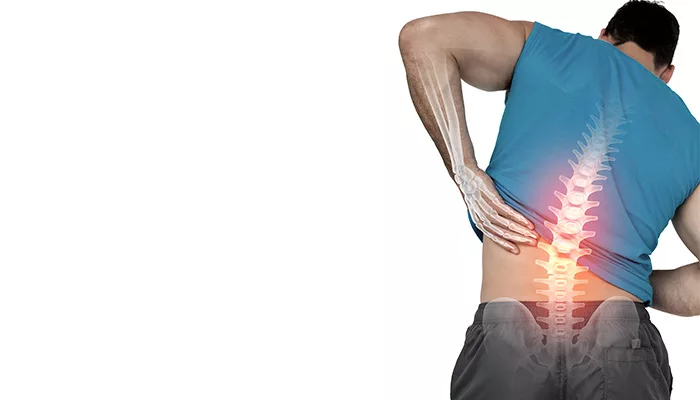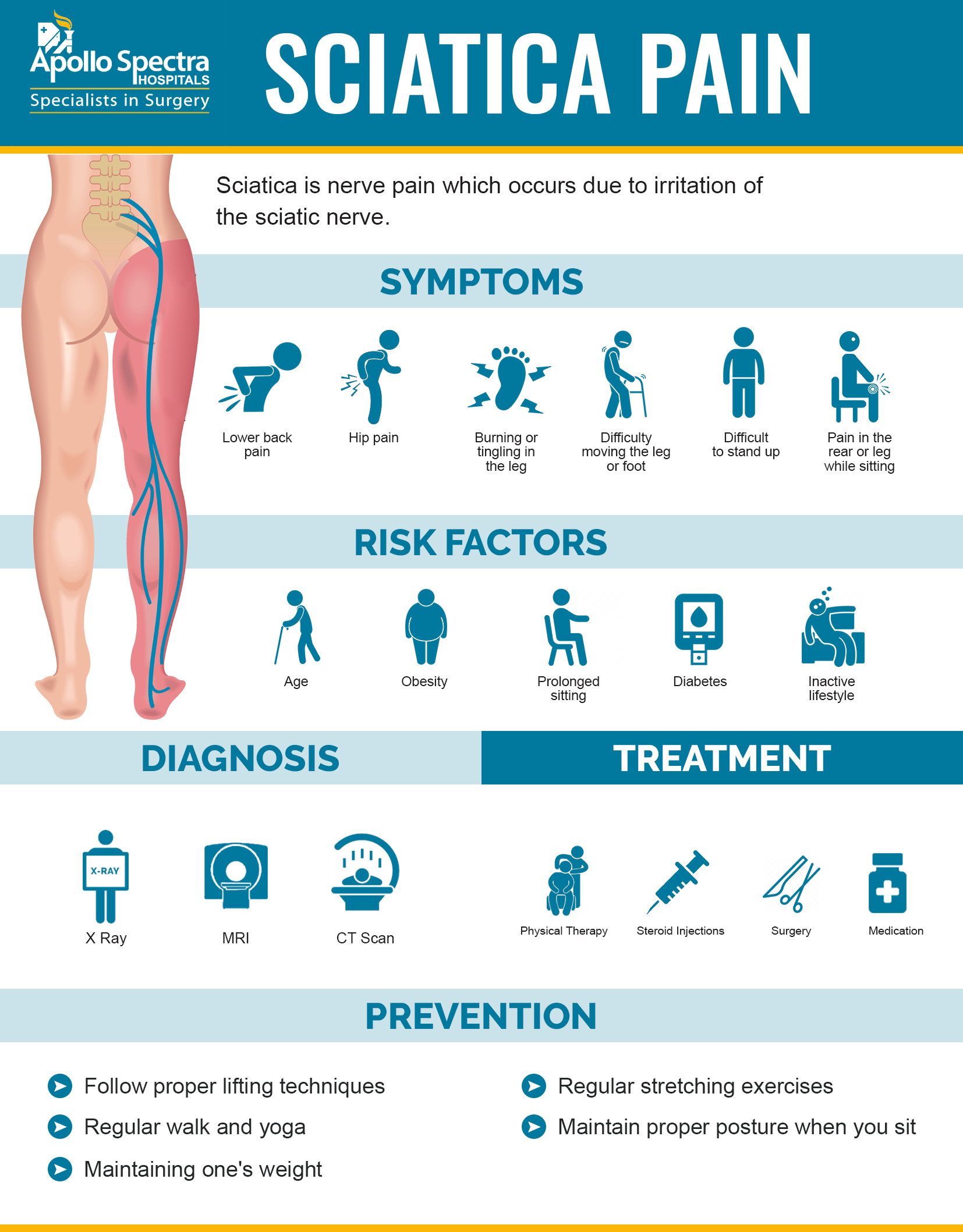Sciatica Pain: Who can be affected
September 5, 2019
Sciatica pain is caused along the sciatic nerve’s path, which branches from your lower back through your hips and buttocks and down the rear of the leg. Typically, only one side of the body is affected. This pain can be severe which, in most cases, can be treated with non-operative treatment. However, if you have significant bladder or bowel changes and leg weakness, surgery might be the only option for you.

Sciatica Pain: Symptoms
The most definitive symptom of sciatic pain is pain in your lower pack, spreading towards your hips and legs. However, there are some other symptoms that you must look out for:
- The pain gets worse after prolonged standing or sitting.
- Coughing, sneezing, hard bowel movement, bending backwards, or even laughing makes the pain worse.
- There is weakness, tingling, or numbness in the foot or leg that makes moving it difficult.
Sciatica Pain: Causes
Usually, there is no single, specific cause of sciatic pain. The pain might just occur one day due to moving quickly or lifting something heavy. Here are some causes that are associated with sciatic pain:
- A herniated or slipped disk is one of the most common causes of sciatica. It can result in causing pressure or irritating the nerve. 2. Lumbar spinal stenosis is a condition in which the canal containing the spinal cord is narrowed. This causes pressure on the sciatic nerve resulting in pain. 3. Spondylolisthesis is a medical condition in which one spinal bone slips forward or backward over another resulting in sciatic pain. 4. A person suffering from Piriformis syndrome can have the sciatic nerve trapped by the piriformis muscle present in the buttocks. People with osteoarthritis can also have pinching of the sciatic nerve. 5. Carrying hard objects like a golf bag or large objects and sitting on a hard surface for a long period can cause sciatic pain. 6. Exercise or lifting heavy weights in a deadliftRisk factors
For sciatica pain, the following risk factors are involved:
- Bone spurs and herniated disc caused due to age-related changes.
- Excessive stress on the spine caused due to increased weight or heavy exercise.
- A profession requiring you to carry a heavy load or drive a vehicle for a long time.
- Sitting in the same position for long periods and having a sedentary lifestyle.
- Condition like diabetes that affects blood sugar increases the nerve damage risk.
Sciatica Pain: Prevention
For all conditions, prevention is always better than cure. The same goes for sciatic pain. The following tips will help you prevent sciatica pain:
- Keep your back strong by exercising regularly. You need to focus on your core muscles present in the lower back and the abdomen. This will also help you in maintaining proper alignment and posture.
- Whenever you sit, make sure you have a seat with good swivel base, armrests and most importantly, lower back support. To maintain the normal curve, place a rolled towel or a pillow in the back.
- If your job involves standing for a long period, you should switch to one foot on a small box or stool. While you are lifting something heavy, put pressure on your lower extremities instead of the lower back. Bend at the knees.
Sciatica Pain: Diagnosis
For checking the sciatic pain, your reflexes and muscle strength will be tested. Apart from this, the following imaging tests help in diagnosing sciatica pain:
- X-Ray – It will display any overgrown bone that might be causing pressure on the nerve. • MRI – This test uses magnetic waves to get your back’s cross-sectional images. These detailed images of bone and soft tissues will help in determining what is causing the sciatic pain. • CT scan – CT scan is a non-invasive diagnostic imaging procedure that can be used to produce cross-sectional images of the spine. It can help detect abnormalities such as fractures, infections, and tumours. In some cases, a dye is used to to help the organs or tissues show up more clearly.
Sciatica Pain: Treatment
The following treatment methods are used for getting rid of sciatic pain:
- Medications: There are certain drugs prescribed for treating sciatic pain like anti-inflammatories, narcotics, anti-seizure medications, muscle relaxants, and tricyclic antidepressants. 2. Physical therapy: This involves correcting your posture, improving flexibility, and strengthening the muscles that support your back. This not only helps in reducing the pain but also prevent future injuries. 3. Steroid injections: Corticosteroid medication can be injected in some cases for reducing inflammation around the nerve and reduce pain. However, this effect will wear off in a couple of months. Also, taking this medication frequently can cause some serious side effects. 4. Surgery: This option is only considered when the affected nerve has caused extreme weakness, loss of bowel and/or bladder control, or worsening pain. During the surgery, the overgrown bone or part of the herniated disk pressuring the nerve is removed.
Usually, there is no single, specific cause of sciatic pain. The pain might just occur one day due to moving quickly or lifting something heavy.
Our Doctors
DR. ANKUR SINGH
MBBS, D.Ortho, DNB -...
| Experience | : | 11 Yeras Experience |
|---|---|---|
| Speciality | : | Orthopaedics and Tra... | Location | : | NSG Chowk |
| Timings | : | Mon - Sat : 10:00 A... |
NOTICE BOARD
CONTACT US
CONTACT US
 Book Appointment
Book Appointment



.svg)
.svg)
.svg)
.svg)








